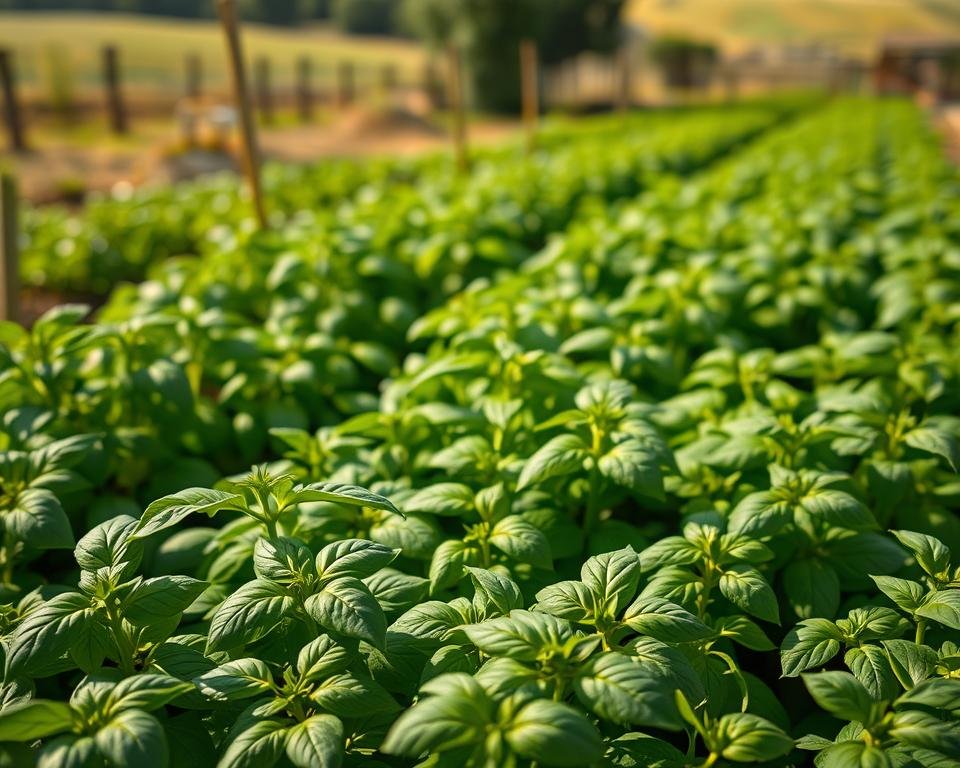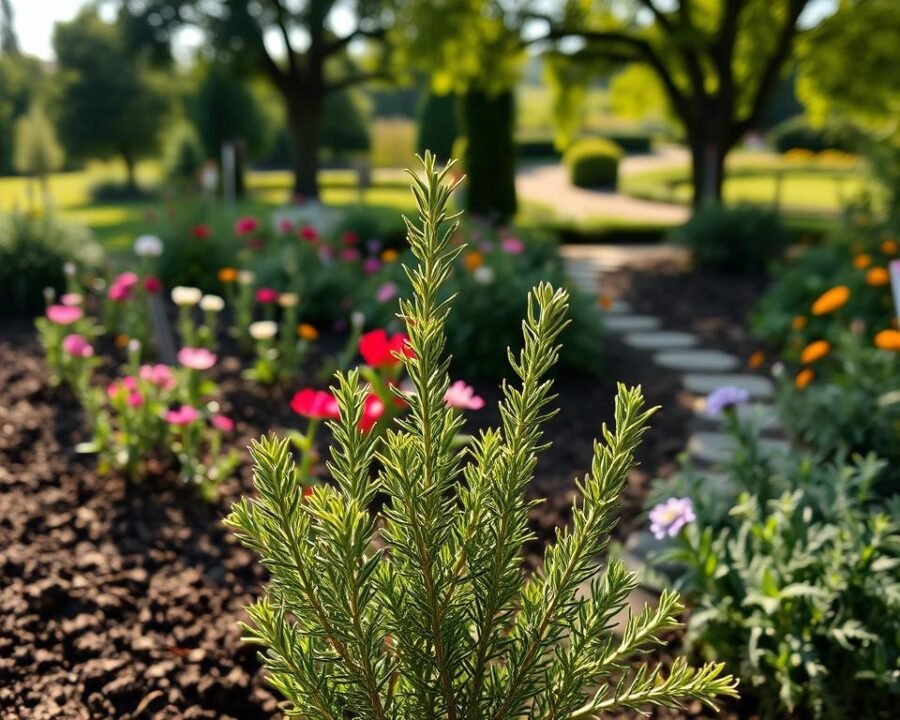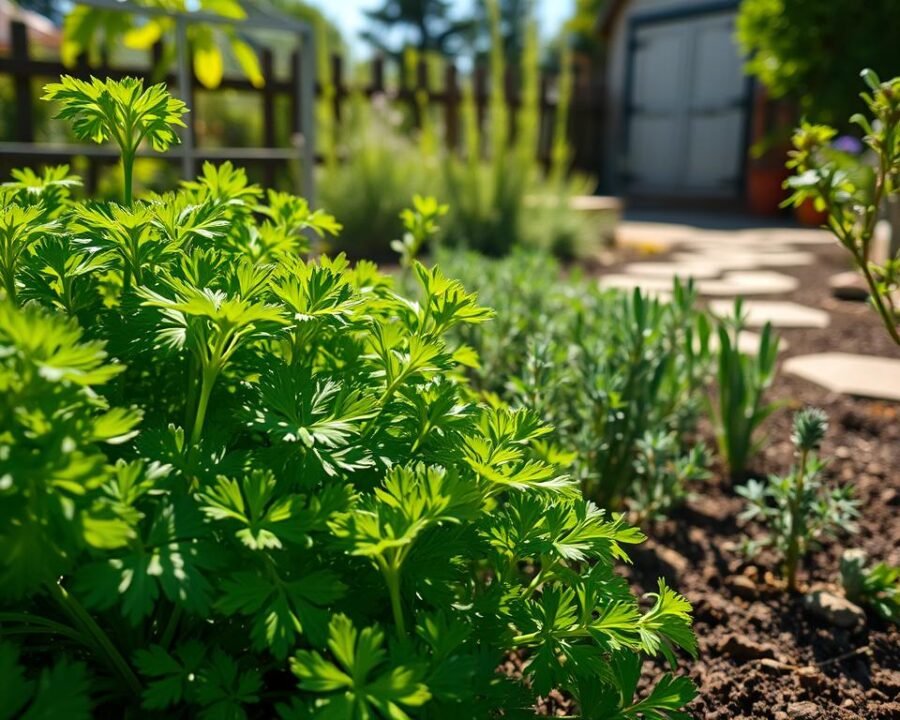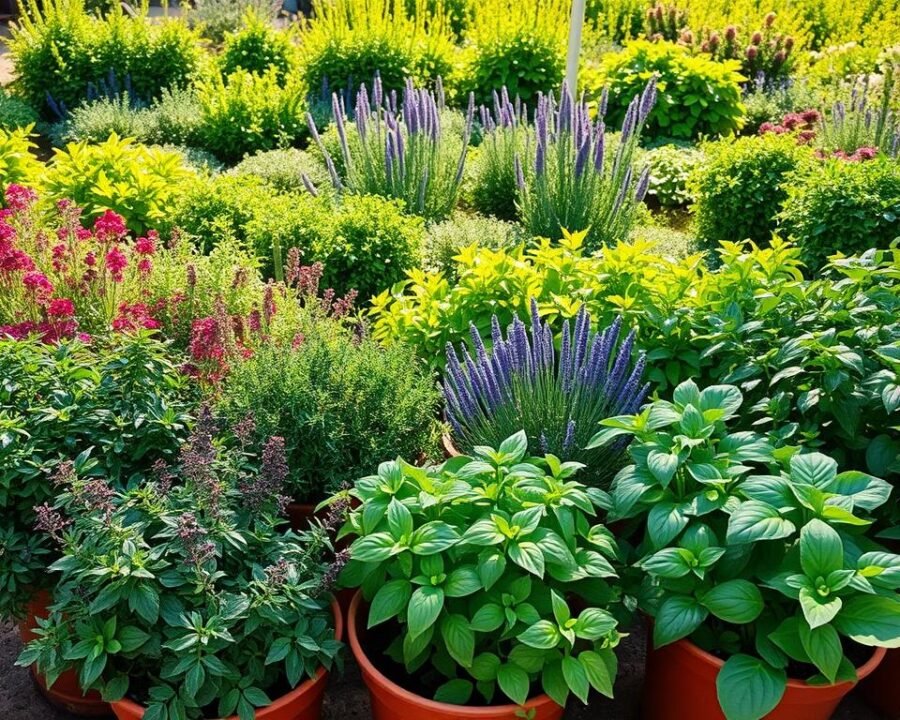Nothing beats the satisfaction of snipping fresh leaves straight from your own herb garden. Whether you’re cooking, crafting, or simply enjoying their fragrance, homegrown plants bring joy and flavor to everyday life.
We’ve curated a selection of six easy-grow varieties that thrive with minimal care. These picks work well in pots or beds, making them perfect for urban balconies or spacious backyards. No green thumb required—just sunlight, good drainage, and occasional watering.
Beyond convenience, cultivating these herbs offers health perks and endless culinary creativity. Imagine pesto with homegrown basil or mint-infused lemonade on a summer afternoon. Experts like Proven Winners and Janet Loughrey endorse these choices for their reliability and versatility.
Key Takeaways
- Six low-maintenance herbs ideal for beginners and seasoned gardeners
- Suitable for both indoor and outdoor spaces year-round
- Enhance meals with fresh, homegrown flavors
- Health benefits paired with culinary flexibility
- Simple care: sunlight, drainage, and regular trimming
Introduction to Growing Herbs at Home
Urban dwellers can enjoy farm-to-table freshness with compact herb setups. No sprawling yard? No problem. A sunny windowsill or balcony corner works perfectly. Over 85% of these plants thrive in containers with basic care—just 4+ hours of sun and well-draining soil.
Small-space solutions like vertical planters or hanging pots maximize yield. Mint and thyme spread horizontally, while basil and rosemary grow upward. This versatility makes them ideal for apartment-friendly plots.
Indoor vs outdoor? Both have perks. Windowsills offer year-round access, while outdoor beds benefit from natural pollinators. Rotate pots seasonally for continuous harvests.
Smart Care Tips
- Water when the top inch of soil feels dry—overwatering harms roots.
- Use *harvest-driven pruning*: Snip leaves often to encourage bushier growth.
- Pair compatible plants (e.g., basil with tomatoes) to deter pests naturally.
| Herb | Yield per Sq Ft | Sun Needs |
|---|---|---|
| Basil | 1.2 lbs | Full sun (6+ hrs) |
| Parsley | 0.8 lbs | Partial shade |
| Rosemary | 0.5 lbs | Full sun |
Store-bought bundles cost $2–$4 each. A single plant yields 10x that over a season. Plus, homegrown means no plastic waste or wilted leaves.
Ready to start your herb garden? Even a single pot of basil brings flavor and joy to your kitchen.
1. Basil: The Versatile Kitchen Staple
Bright green basil leaves add instant vibrancy to any dish. This aromatic favorite grows vigorously, offering bold flavor for sauces, salads, and more. With over 60 varieties—from sweet Genovese to zesty Thai—there’s a type for every palate.

Growing Conditions
Basil thrives in full sun (6–8 hours daily) and well-draining soil. Start seeds indoors 6 weeks before the last frost. Ideal conditions:
- pH range: 6.0–7.5 (slightly acidic to neutral).
- Container depth: At least 8 inches for root growth.
- Avoid planting near fennel or cabbage—they stunt each other.
| Temperature Range | Effect |
|---|---|
| 50°F–70°F | Optimal growth |
| Below 50°F | Stunted leaves |
| Above 90°F | Bolting (early flowering) |
Culinary Uses
Harvest leaves in the morning for peak flavor. Try these ideas:
- Infuse oils within 2 hours of picking for fresh taste.
- Freeze chopped leaves in ice cubes for winter soups.
- Add to desserts like strawberry-basil sorbet.
“Basil’s sweetness balances spicy and acidic ingredients beautifully.”
Pro Tips
Pinch off flower buds to prolong leaf production. Water at the base to prevent fungal diseases. For year-round harvests:
- Plant new seeds every 3 weeks (succession planting).
- Save seeds from heirloom varieties for future crops.
2. Rosemary: The Hardy Perennial
Few plants combine resilience and aroma like rosemary. Its woody stems and needle-like leaves thrive in dry, sunny spots, making it ideal for forgetful gardeners. This Mediterranean native survives poor soil and drought, yet rewards with intense flavor.

Growing Conditions
Rosemary loves full sun and well-drained soil. In colder zones, grow it in a container to move indoors. Key tips:
- Space plants 24–36 inches apart for airflow.
- Water deeply but infrequently—soggy roots spell trouble.
- Prune lightly after flowering to maintain shape.
Culinary Uses
Strip leaves from stems for roasting meats or infusing oils. Its piney taste pairs well with:
- Lemon in marinades.
- Garlic in bread.
- Olive oil for dipping.
Pro Tips
Propagate from cuttings for free plants. Scrape stems, dip in rooting hormone, and plant in sandy mix. Avoid high-nitrogen fertilizers—they reduce flavor.
3. Mint: The Refreshing Spread
Mint’s varieties, like chocolate or pineapple, offer unique twists. But beware: its underground runners can overtake beds. Plant in a container or use barriers.
Growing Conditions
Keep soil moist and provide partial shade for variegated types. Sub-irrigation pots prevent overwatering. Mint thrives in:
- Window boxes.
- Hanging planters.
- Confined garden corners.
Culinary Uses
Muddle leaves for mojitos or blend into nut-free pesto. Candy them for desserts or steep in tea. Its menthol soothes digestion naturally.
Pro Tips
Prune leggy stems to 2 inches to rejuvenate growth. Harvest mid-morning when oils peak. Pair with tomatoes to deter pests.
4. Thyme: The Earthy Enhancer
Thyme’s tiny leaves pack a punch of earthy flavor, transforming simple dishes into culinary delights. This drought-tolerant plant attracts pollinators with its delicate flowers, making it a dual-purpose star in any setup.
Growing Conditions
Thyme thrives in full sun and well-draining soil. Ideal for rock gardens, it benefits from gravel mulch to mimic its native Mediterranean habitat. Overwintering tips vary by zone:
- In colder regions, mulch heavily or move pots indoors.
- In warmer areas, prune lightly in fall to encourage spring growth.
Culinary Uses
Harvest leaves before flowering for peak flavor. Try these ideas:
- Infuse honey with sprigs for sore throats.
- Mix into softened butter, then chill as logs for savory spreads.
- Pair with rosemary or oregano in roasted meats.
“Thyme’s thymol compound offers natural antimicrobial benefits—perfect for winter remedies.”
Pro Tips
Divide mature plants every three years to prevent overcrowding. Regular pruning avoids woody stems. For continuous harvests, sow seed every early summer.
5. Parsley: The Biennial Powerhouse
Often overlooked as a garnish, parsley deserves center stage. This family-friendly herb packs vitamins A and C into its curly or flat leaves. Unlike single-season plants, it keeps producing for two years when properly cared for.

Growing Conditions
Soak seeds for 24 hours before planting to boost germination. Cold climates benefit from winter sowing—just press seeds into soil before snowfall. Ideal conditions include:
- 6 hours of sun daily
- Consistent water (1 inch weekly)
- Rich, loose soil with pH 6.0-7.0
Transplant seedlings on cloudy spring mornings to prevent shock. Space plants 8 inches apart in rows or containers.
Culinary Uses
Flat-leaf varieties offer stronger flavor for dishes like chimichurri. Try these ideas:
- Blend with garlic and oil for freezer cubes
- Roast roots with winter vegetables
- Toss chopped leaves into grain salads
“Parsley’s chlorophyll neutralizes strong odors—perfect after garlic-heavy meals.”
Pro Tips
Check undersides of leaves for swallowtail butterfly eggs before harvesting. To extend production:
- Mulch before winter to protect crowns
- Plant near tomatoes to deter pests naturally
- Harvest outer stems first to promote regrowth
6. Sage: The Antioxidant-Rich Herb
With its silvery foliage and robust flavor, sage elevates simple dishes effortlessly. This hardy plant boasts over 150 polyphenols, making it a nutritional powerhouse. Whether dried or fresh, its velvety leaves add depth to recipes and attract pollinators like hummingbirds.
Growing Conditions
Sage thrives in full sun and well-draining soil. Gravel mulch mimics its native rocky habitats, improving drainage. For containers:
- Choose pots 12+ inches wide to accommodate roots.
- Prune stems annually to prevent overcrowding and mildew.
- In cold zones, wrap plants with fleece during winter.
Culinary Uses
Harvest leaves before flowering for peak potency. Try these ideas:
- Infuse browned butter for pasta or gnocchi.
- Mix with sea salt to preserve flavor for months.
- Blend into herbal smoking mixtures for meats.
“Sage’s thymol content adds antimicrobial benefits to roasted poultry rubs.”
Pro Tips
Propagate new plants by dividing roots in early spring. Opt for silver-leaf varieties like ‘Berggarten’ for striking visual appeal. Spot mildew early—yellow leaves signal overwatering.
Conclusion: Start Your Herb Garden Today
Growing fresh plants at home brings flavor and joy to any kitchen. With a 94% success rate using starter plants, beginners can dive in confidently. Even small spaces work—just pick a sunny spot and well-draining soil.
Starter kits with basil, thyme, and mint make perfect combos. Swap seeds locally to discover new varieties. Beyond savings, tending herbs reduces stress and connects us with nature.
Ready for more? Explore companion planting or drying techniques. Share your progress online—we love seeing thriving container gardens! Every snipped leaf is a step toward sustainable, tasty living.
